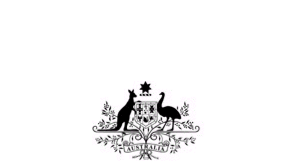
Commonwealth of Australia
Migration Regulations 1994
CLASSES OF PERSONS (EXEMPT FROM THE AGE CRITERIA)
(Paragraphs 186.221(b), 186.231(b), 187.221(b), 187.231(b))
I, CHRIS BOWEN, Minister for Immigration and Citizenship, acting under paragraphs 186.221(b), 186.231(b), 187.221(b) and 187.231(b) of the Migration Regulations 1994 (‘the Regulations’):
- SPECIFY the following classes of persons for the purposes of paragraphs 186.221(b), 186.231(b), 187.221(b) and 187.231(b) of the Regulations:
Class 1
Persons who are employed in certain occupations and industries as follows:
- Ministers of Religion (ANZSCO 272211) who have applied for a visa under the Regulations to occupy a position as nominated by a religious institution;
- Researchers, scientists and technical specialists at ANZSCO skill levels 1 or 2, who have applied for a visa under the Regulations to occupy a position as nominated by Australian government agencies;
- Senior academics who have applied for a visa under the Regulations to occupy a position as nominated by a university in Australia. A senior academic is a person to be employed at an Academic Level of B, C, D or E as a University Lecturer (ANZSCO: 242111) or Faculty head (ANZSCO: 134411).
2. SPECIFY the following classes of persons for the purposes of paragraphs 186.221(b) and 187.221(b):
Class 2
Persons:
- who have been working for their nominating employer as the holder of a Subclass 457 visa for at least the four years immediately before applying; and
- whose annual earnings for each year in the four year period was at least equivalent to the Fair Work High Income Threshold.
This Instrument, IMMI 12/058, commences on 1 July 2012, immediately after the commencement of Migration Amendment Regulation 2012 (No. 2).
Dated 12 June 2012
Chris Bowen
Minister for Immigration and Citizenship
[NOTE 1: Paragraphs 186.221(b), 186.231(b), 187.221(b), and 187.231(b) of the Regulations provide that, at the time of the application the applicant was a person in a class of persons specified by the Minister in an instrument in writing.
NOTE 2: ANZSCO means the Australian and New Zealand Standard Classification of Occupations published by the Australian Bureau of Statistics and as current on 1 July 2010.
NOTE 3: Regulation 1.03 of the Regulations defines religious institution as a body that, the activities of which, reflect that it is a body instituted for the promotion of a religious object; and the beliefs and practices of the members of which constitute a religion due to those members believing in a supernatural being, thing or principle and accepting the canons of conduct that give effect to that belief, but that do not offend against the ordinary laws; and that meets the requirements of section 50-50 of the Income Tax Assessment Act 1997; and the income of which is exempt from income tax under section 50-1 of that Act.
NOTE 4: Subregulation 2.57A(1) defines earnings to include the person’s wages, and amounts applied or dealt with in any way on the person’s behalf or as the person directs, and the agreed money value of non-monetary benefits.
NOTE 5: Information relating to the Fair Work High Income Threshold can be found at www.fairwork.gov.au.]